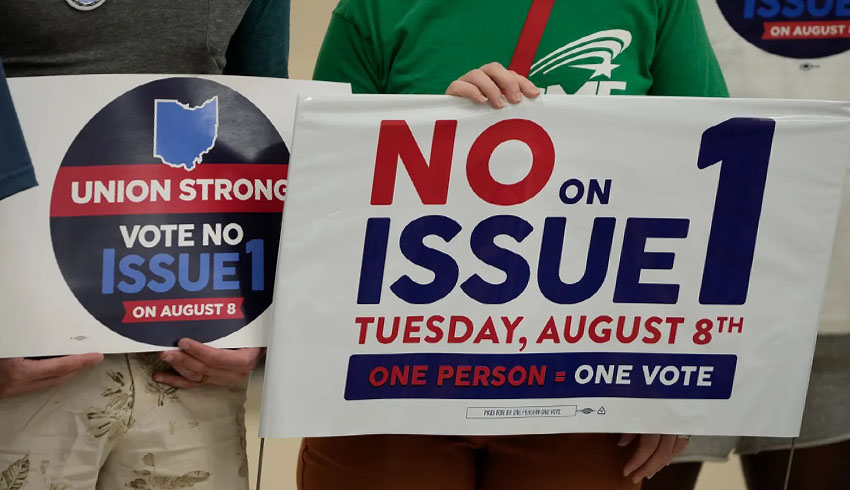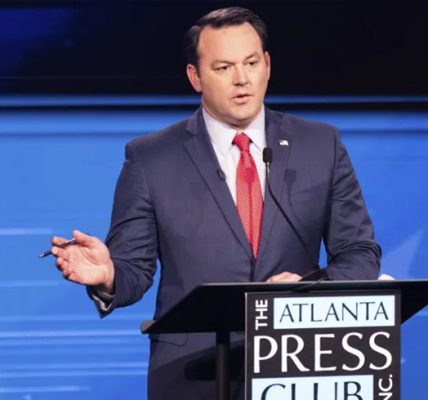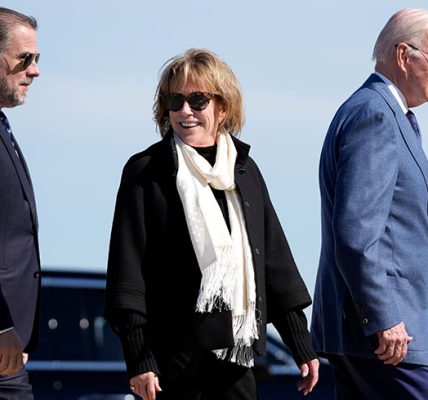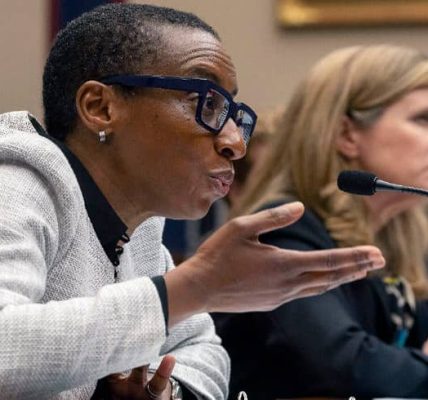Controversy brews as Ohio voters tackle Issue 1, a ballot measure aiming to raise the bar for constitutional amendments with a 60% approval threshold, sparking debates over citizen voices, special interests, and the fate of future amendments.
COLUMBUS, Ohio — A pivotal event in Ohio’s political landscape is set to unfold as voters take to the polls for a special election on Tuesday, centered around a contentious ballot measure, Issue 1. At the heart of the debate lies the question: How many voters does it take to make a majority?
The Issue 1 referendum seeks to reshape the state’s constitution by raising the threshold for voter approval of amendments. If approved, this measure would dramatically alter the dynamics of future constitutional changes, mandating a 60% approval threshold. This significant shift represents a departure from the historical norm, wherein a simple majority sufficed, a standard that has prevailed since 1912.
The chief proponent of this change, Republican Secretary of State Frank LaRose, asserts that the primary aim is to safeguard Ohio’s founding document from undue influence by wealthy out-of-state special interests. LaRose emphasizes the gravity of the decision, stating, “We’re talking about amending the Constitution probably for the rest of our lifetimes. That should be taken very seriously.”
Opposition to the referendum, however, perceives the timing of this special election as a strategic maneuver to thwart a forthcoming constitutional amendment. This amendment, slated for the November ballot, pertains to enshrining reproductive rights in Ohio’s constitution.
The Nexus of Issue 1 and Abortion Access
The origins of Issue 1 can be traced back to the implementation of Ohio’s six-week abortion ban during the previous summer. The controversial ban faced legal challenges, and one particularly harrowing case brought it into the spotlight: a 10-year-old rape victim who was compelled to travel to Indiana for an abortion due to Ohio doctors’ refusal to treat her.
In response to the abortion ban, advocacy groups mobilized and initiated efforts to draft a constitutional amendment ensuring abortion access. These groups embarked on a signature-gathering campaign to secure a place on the November ballot for this amendment.
Republican supermajority lawmakers, recognizing the political significance of these changes, faced a hurdle in their endeavor to secure a 60% voter approval requirement for constitutional amendments. Unable to incorporate their proposal into the state’s May primary ballot, they devised a new strategy: an August special election.
However, a complication arose; Republicans had previously endorsed a law that curtailed most August special elections, thereby creating a seeming contradiction. Secretary of State Frank LaRose, who had supported this law, asserted that while he didn’t advocate for August elections as a regular practice, they remained a valid option if legislated.
Unprecedented Opposition and Legal Battles
The path to implementing the Issue 1 referendum was met with substantial opposition, culminating in a massive coalition that rallied against the heightened approval threshold. Hundreds of protesters congregated at the Ohio Statehouse in May to voice their discontent. Despite this resistance, Republican lawmakers pressed ahead, even introducing a provision that would amplify the challenges faced by grassroots groups attempting to introduce amendments.
Under this provision, these groups would now be mandated to gather signatures from all 88 counties, as opposed to the current requirement of 44. This revision is projected to disproportionately impact smaller, rural regions, potentially rendering it nearly impossible for grassroots movements to effect change through constitutional amendments.
The Broader Picture and National Attention
While citizen-driven amendments have been relatively rare in Ohio’s history, Issue 1 has galvanized an array of political players on both sides. Supporters include anti-abortion organizations, gun rights groups, and prominent business associations concerned about an imminent minimum wage amendment. In contrast, the opposition encompasses labor unions, abortion rights activists, advocates of gun law reform, and a cohort of Ohio’s former governors and attorneys general from across the political spectrum.
Among the critics, Democratic former state Representative Mike Curtin stands out as a prominent voice. Curtin contends that Issue 1 represents an abrupt alteration of a century-old right, transforming the process of amending the state constitution from a relatively attainable goal to an arduous endeavor dictated by an onerous 60% threshold.
Despite the contentious timing amidst the traditional August vacation season, Ohioans have shown robust engagement with early voting. Reports of long lines in various counties underscore the significance of this issue. Both sides have also spared no expense in their efforts, with an advertising blitz that has totaled approximately $22 million. Notably, a majority of these funds originate from external sources, further emphasizing the nationwide attention this referendum has garnered.
As the special election looms, Issue 1 stands alone on the ballot, its implications resonating far beyond the borders of Ohio. The outcome of this vote will serve as a barometer for the trajectory of constitutional change in the state and could potentially have repercussions that reverberate throughout the broader landscape of American politics.










